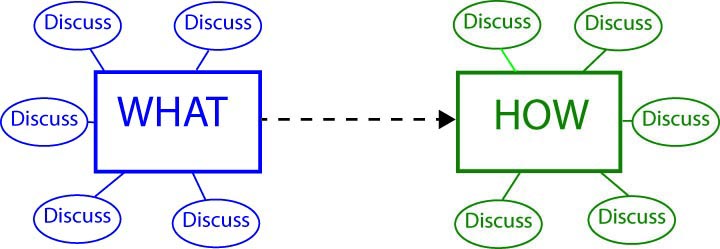Many communities fight the same old battles over and over. And even when there’s something new to consider—a solution that could improve the downtown, say, or a big economic development opportunity—the city can’t seize it because everyone is squabbling about the details. How do places get stuck in such unproductive debates?
There can be many reasons, some involving deep unresolved conflicts (dealing with race and class or other social and political divisions). But a surprising number of times, the reason is simpler: The community is talking about the issue in the wrong way. Leaders have jumped into a discussion of “how” before talking thoroughly about “what.”
Confused? Bear with me. Most leaders are problem solvers by nature. Show them a problem, and they’ll work through as quickly as possible to a solution, then pour their energies into selling that solution. On one level, it’s refreshing to be around such quick thinkers. And if the leaders are extremely powerful and can bulldoze opponents (think of Mayor Daley at his zenith in Chicago), it might work. Otherwise, it’s a recipe for disaster.
Here’s a better way: Spend at least as much time talking with other leaders and the public about the problem and why it’s worth solving as you do on actual solutions. Help everyone agree on “what” (the problem and the benefits of its solution) before moving to “how” (the solution itself).
Yes, this requires quick thinkers to show some patience, but it will pay off in two ways. First, it will dampen divisions. Most of the big battles in communities are over “hows,” not “whats.” (People generally agree on the need for better mobility, just not on that road in that place. They agree on the need for city services, just not on that tax at this time.) If you start with a thorough discussion of “what” (mobility and its benefits, city services and their benefits), you make it easier later on to accept the sacrifice of the “how.” Second, spending more time with “what”—and inviting many people into that discussion—may open the door to a better “how.” In complex environments like cities, thinking about problems from many perspectives usually improves solutions.
Let’s use an example: how to help your downtown. Let’s say that you’ve been thinking about this for a long time and have decided your downtown needs a business improvement district, which allows commercial property owners to tax themselves for special improvements such as streetscaping and security. If you do what many leaders do and simply announce your solution, you open a free-fire zone. Property owners may not like it (why should they pay for additional services the city ought to provide?), citizens may be suspicious (isn’t this just privatizing our downtown?), downtown residents may object (why don’t we get a seat at the table?), and on and on. Six months from now, you may still be bogged down in the debate . . . if the idea isn’t already dead.
Why not take those six months for a discussion of what downtown could be if its biggest problems could be solved? How it could look and feel. Which new businesses or attractions could be there. How young people or older citizens might use it.
After—but only after—a vision is in place, then move to the problems standing in the way (we need streetscaping and better security) and how they could be solved. The groups you’ve assembled might quickly take up the idea of a BID, or they might choose another solution. But they’ll come to it with a far better idea of what they’re trying to solve and why it’s important, and they’ll come to it collectively. You won’t have to argue with property owners, citizens, or downtown residents about why it’s important to take a first step. They’ll be among those demanding it.
And they’ll be demanding it for the best of all possible reasons: They own the problem. They believe in the benefits of solving it. They’ve thoughtfully explored the solutions.
And they’ve done it in the right order.
This is part of a series of brief postings called Rules for Reformers. For an introduction to the series, please click here.

